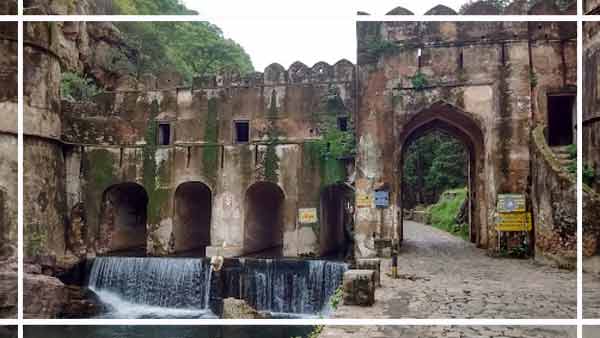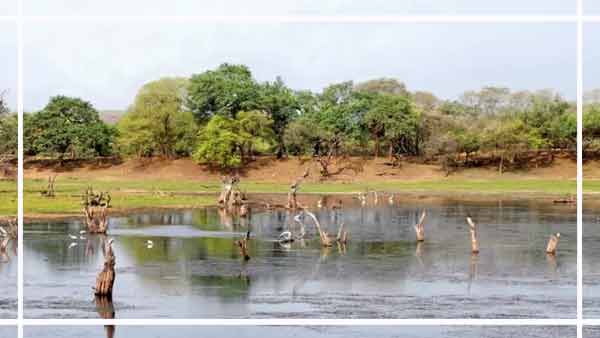Ranthambore Destination A wildlife sanctuary is located in the Sawai Madhopur district of Rajasthan, at a distance of 8 km from Sawai Madhopur, 140 km from Kota, 162 km from Jaipur, 268 km from Agra, 271 km from Ajmer, 368 km from Delhi, 413 km from Udaipur and 448 km from Jodhpur. As part of the Rajasthan tour packages, it is one of the largest and most popular national parks in India to visit and almong the best places to experience Rajasthan Tourism.
Among the must include places in Indian wildlife tours, in 1955 the Government of India established Ranthambhore as the Sawai Madhopur Game Sanctuary and was declared one of the Project Tiger reserves in 1974. In 1981 Ranthambore was made a national park. The adjacent forests were named the Sawai Man Singh Sanctuary and the Keladevi Sanctuary in 1984, and the tiger reserve was extended to include the Singh Sawai Man and Keladevi Sanctuaries in 1991 Ranthambore Destination.
The Ranthambore National Park was once the Maharajas of Jaipur’s hunting ground. The Ranthambore National Park was bordered by the rivers Chambal in the South and Banas in the Nord. The park’s landscape is composed of vast formations of rock, steep scarps, seasonal lakes and streams. It takes its name from the historic fortress of Ranthambhore, which lies within the park. The park ‘s popular water bodies include the Padam Talab, Raj Bagh Talab, and Malik Talab Ranthambore Destination
Ranthambore Destination Spread over 392 sq of area. Km, the park is widely known for its tigers and one of India’s best places to see magnificent animals in their natural habitat. The park is subdivided into 10 safari areas. Including tigers, tourists will see a wide range of animals including sloth bear, leopard, caracal, jackal, fox, hyena, mongoose, Dairy chital, sambar deer, blue bull antelope or nilgai, macaque rhesus, langur and an incredible range of birds in Ranthambore. The park also has a large variety of reptiles including snub nosed marsh crocodiles, desert monitor lizards, tortoise, banded kraits, cobras, common kraits, Indian pythons, rat snakes, Russell’s vipers, saw-scaled vipers, and the Indian chameleon Ranthambore Destination.
Ranthambore Destination Due to the pictorial ruins that dot the wildlife park which includes Ranthambore Fort, Jogo Mahal and Rajbagh, Ranthambore is also considered a famous heritage place. Among the wildlife, tourists can also visit Trinetra Ganesh Temple, Rajiv Gandhi Regional Natural History Museum, Kachida Valley, Ranthambore School of Art, Lakarda and Anantpura, and Ranthambore Bakaula. This National Park is the vision of a wildlife enthusiast and a photographer. It offers excellent accommodation and the facilities for internal transport. Safari rides incorporate Ranthambore National Park feature. For the safari, there are two vehicle options: 20 seat open top canter or 6 seater open top gypsy. Every ride lasts around three hours.
Ranthambore Destination nearest airport is Jaipur which is approximately 148 km from Ranthambore. Sawai Madhopur Junction, located about 8 km from the park, is on the Delhi-Mumbai trunk road. Connects well with Delhi, Jaipur, Indore, Ranchi, Ajmer, Udaipur, Agra, Kota, Puri, Bikaner, Ahmedabad, Mumbai , Chennai, Mysore, Coimbatore, Jodhpur, Hyderabad, Amritsar, Haridwar, Lucknow, Guwahati, Trivandrum, Patna, Dehradun, and Bhopal. Sawai Madhopur Bus Stand is the nearest bus station about 9 km from Ranthambore National Park, which has direct bus connections to Udaipur, Jaipur, Alwar, Jodhpur, Ajmer, Kota, and Tonk.
Major Attractions in Ranthambore – Ranthambore Destination
Ranthambore Fort

Of the best places to visit in Ranthambore Fort Ranthambore is an inevitable location that lies within the vicinity of the Sawai Madhopur National Park. Since the ancient rulers used to reach here for hunting, it is a well-known place. It played a significant role in taking Rajasthan tourism to the next level.
The fort shows the Chauhan dynasty ‘s outstanding glory and valor of Hammir Dev. It is also considered a valuable spot, because it is one of the World Heritage List. The fort is located in a protected area heavily nurtured by dense green forests and a stable climate. You can also observe different types of valleys, lakes, picnic areas, wildlife species etc., surrounding the fort. There is a traveled past along with the fort; the past of wars and captures, numerous conquerors, and improvements happened to the fort from time to time.
Padam Talao

The largest lake within Ranthambore National Park is Padam Palao. You can see the very prominent Jogi Mahal right on the edge of this pool. During the season the lily flowers which are the reason the lake gets its name as Padam Talao will be seen in abundance. The lake surroundings are embellished with dense green forests.
The fun sights of countless numbers of birds coming to the shore, along with it, will draw the eyes and heart of everyone. You can also see the wild animals come out from the lake in the early morning and evening to drink water. The whole beauty of the National Park is enhanced at times by the presence of this picturesque lake which is filled with lilies. At the very edge of this specific lake Chinkara ‘s unique sights are probable.
Malik Talao

One of the three lakes in Ranthambore National Park, Malik Talo, is considered a must-visit among the places to visit in Ranthambore, comparatively the smaller. Nestled in the vast green forest, it serves as a refuge for thousands of migratory birds and crocodiles from the Wetlands.
If you visit Ranthambore National Park, never forget to visit this particular lake that opens to tourists either in the morning or in the evening at two different timings. You may also see some variety types of birds that come from the lake to catch their food. The view of the surrounding area will certainly nourish your eyes and everywhere it will naturally be a picturesque beauty. And if luck favors you’ll occasionally see wild animals coming to drink water from the lake.
Raj Bagh Talao

Raj Bagh Talao is the most stunning of the three Ranthambore National Park lakes in contrast. The ruins at the lake’s severe edges bring more charm to this. Since it is located in the middle of the lush green forest reserve, wildlife species are the regular drinking water tourists to the lakes.
The sambhar deer is a regular visitor who eats the grass that is present on the lake floor. Different forms of birds, animals , and plants occur in the morning and evening in the lake ‘s vicinity, when the weather is cooler. This is also a tiger watching area along with other endangered animals that come in the park as the area has a wide range of forest and water supplies.
Rajiv Gandhi Regional Museum of Natural History

Sawai Madhopur, the Rajiv Gandhi National Museum or the Provincial Museum of Natural History, is India ‘s fourth regional natural history museum and is considered one of Ranthambore’s best places to visit. The museum has collections of rare plants, wildlife, and Western Indian geology. The main purpose of this museum is to raise public awareness of the value of protecting the local flora and fauna that are very unique.
It’s also helping to recognize earth’s diversity. The museum has three floors but visitors only have access to the ground floor where ‘Rajasthan Biodiversity or Rajasthan Forests and Wildlife’ is primarily displayed. The facsimile of animals such as chinkara (gazelle), leopard, lion, and tiger are the main attractions along with the set of Bishnoi group village dioramas and rural region of Rajasthan.
Kachida Valley

Kachida Valley will be top of the list among the best places to visit in Ranthambore since it is such a serene valley that consists of many rocky outcrops and low hills. It is situated at the park ‘s edge and nestled in the lush green woods. You will look at the valley closely by a jeep entering there.
Panther is the main animal species found here because they stop going into the deep jungles not making contact with the tigers that end up eating the panthers in captivity. You can see a strong bear population here too. Even, due to the nature of its ideal ecosystem the valley is a refuge for hidden flora and fauna. Besides that, the nearby lakes are an addition to the entire beauty of the place.
Ranthambore School of Art

Get this opportunity to learn more about the arts that thrive in Ranthambore with a visit to Ranthambore’s most exciting location, the Ranthambore School of Art. It is situated a few kilometers from the junction of Sawai Madhopur. The major paintings seen here are of the rare species of wildlife in Rajasthan’s wild forests. The school protects the natural life through the paintings, and makes the public aware of the value of protecting the environment for earth’s nature.
The school has artists coming from nearby villages. The school students visit the National Park to spread their thoughts on protecting the natural biodiversity. The school also has paintings in aquarelle, charcoal, poster color on silk and black and white sketches. The paintings will be shown on famous exhibits from which wonderful thoughts can be passed to the public.
Jogi Mahal
One of Ranthambore’s most famous places to visit is the iconic Jogi Mahal, located directly next to the smooth flowing Padam Lake. When you turn back in time, you’ll find that the Mahal was once a hunting residence for Jaipur’s royalty and other dignitaries who’ve visited here. It was subsequently renovated into a tourist guesthouse, but now it is simply tall and proud of its fine architecture of Rajasthanis.
The view of the lake beyond the Mahal and lush greenery is truly fascinating! Make sure you are visiting the tall banyan tree here, considered one of the country’s largest.

